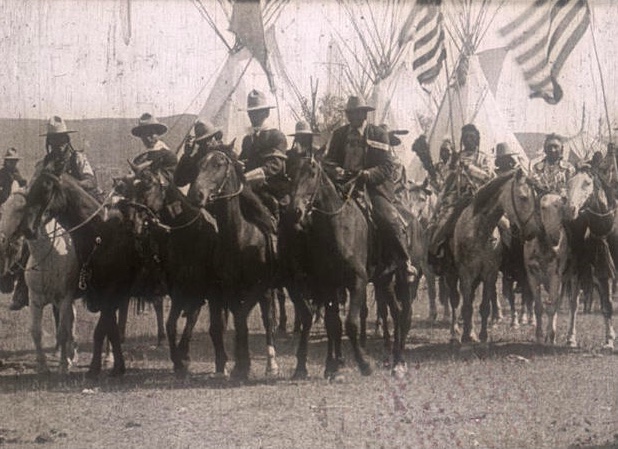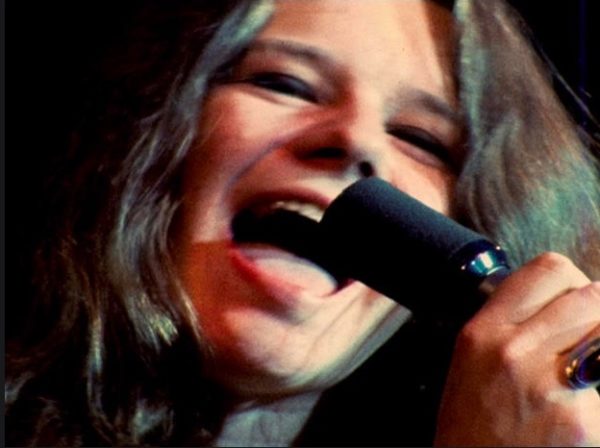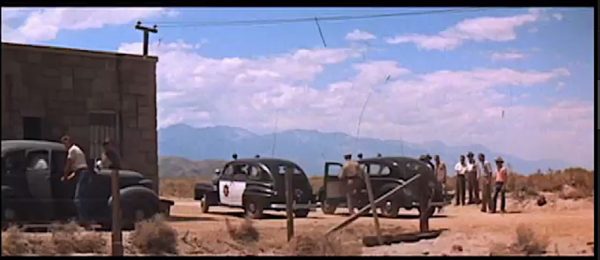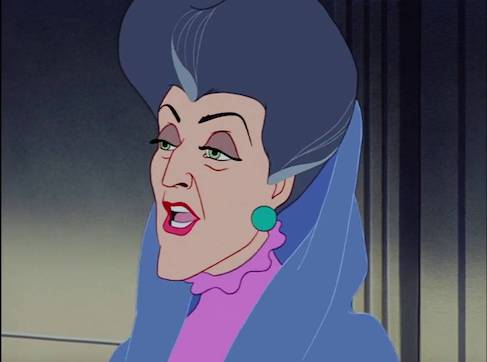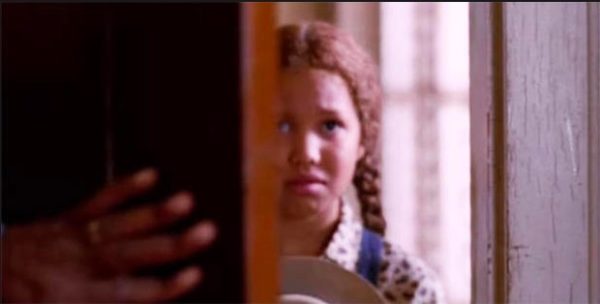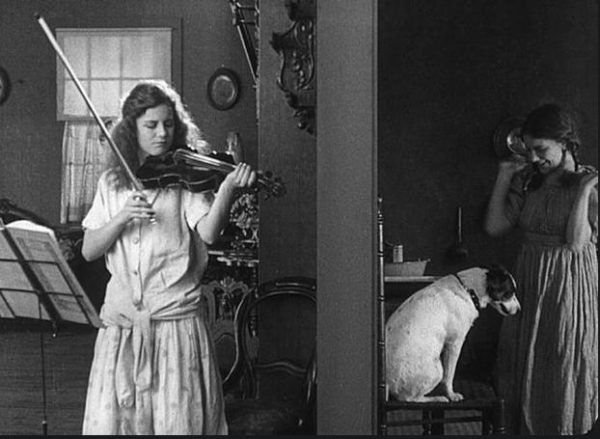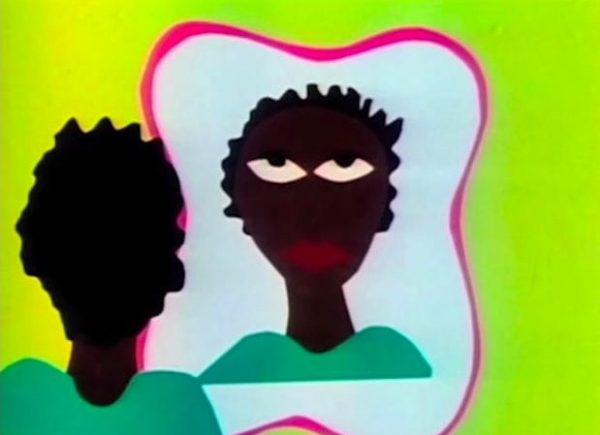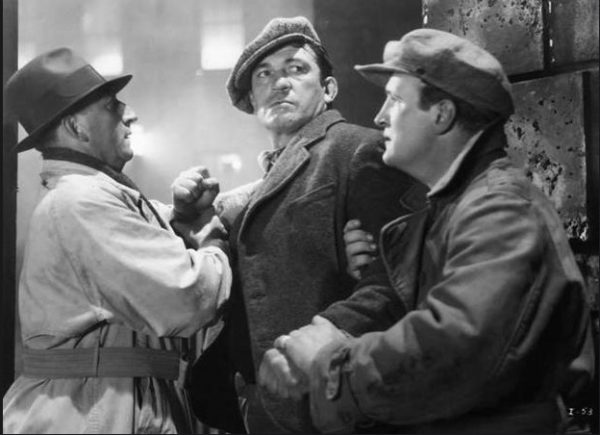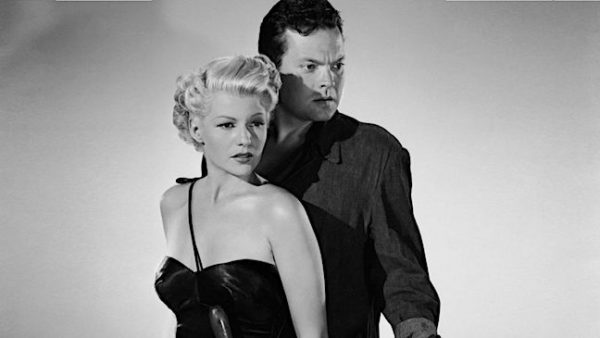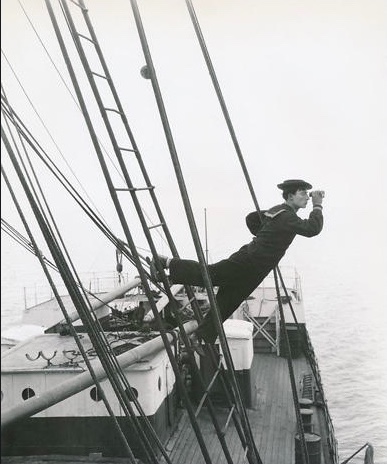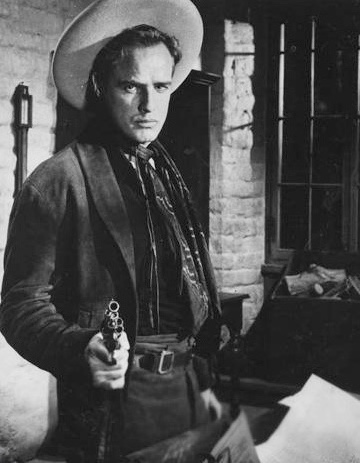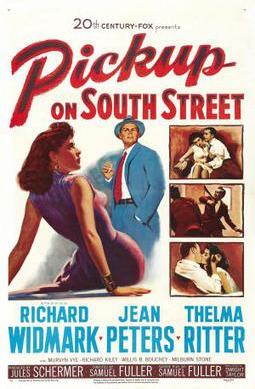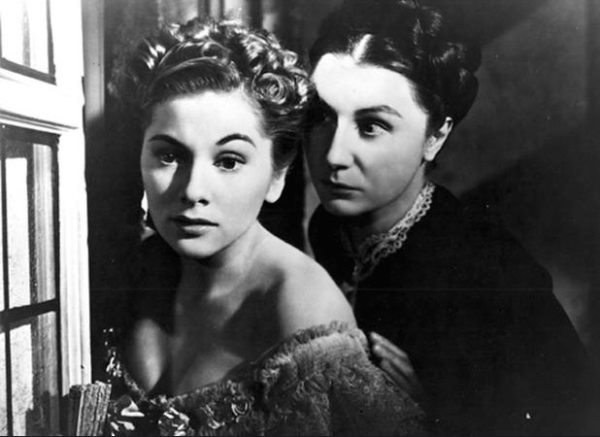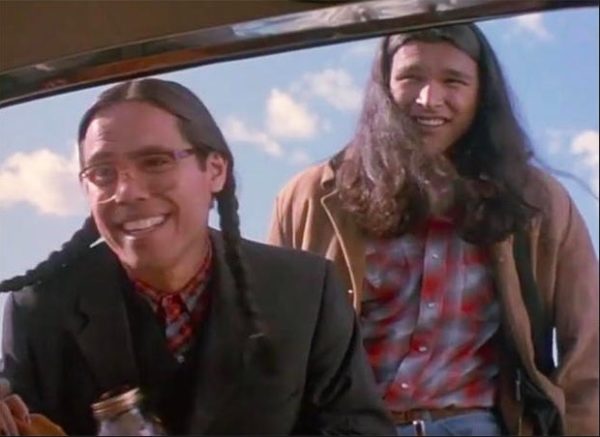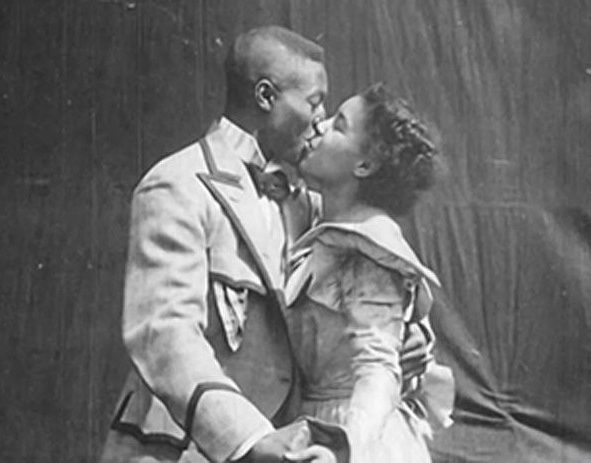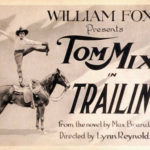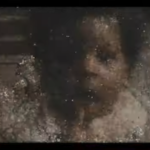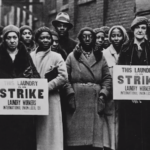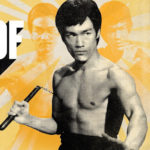25 Additions to the National Film Registry
U.S. Librarian of Congress Carla Hayden announced on 12 December 2018 the annual selection of 25 influential American motion pictures to be added to the National Film Registry of the Library of Congress. Induction marks films’ cultural, historic, and aesthetic importance to the nation’s audiovisual heritage, and being added to the registry ensures that chosen films are permanently preserved.
This year’s films span 107 years, from 1898 to 2005. They include blockbusters, documentaries, silent movies, animation, and independent films. Some of the additions will be well known to many film enthusiasts — the likes of Stanley Kubrick’s The Shining, Paul Newman’s Hud, the musical My Fair Lady, and the music-festival documentary Monterey Pop. Others will be less familiar, or not familiar, at all. They depict such subjects as a forbidden love affair, the ravages of alcoholism, a kiss that broke the color barrier, and dinosaurs improbably returned from extinction.
The 2018 selections bring the number of films in the registry to 750. Under the terms of the National Film Preservation Act, each year the Librarian of Congress names to the National Film Registry 25 motion pictures that are culturally, historically, or aesthetically significant. The films must be at least 10 years old.
The Librarian makes selections after conferring with the members of the National Film Preservation Board (NFPB) and a cadre of Library specialists, and taking into account recommendations from the members of the public, who this year nominated 6,300 titles.
If selected titles have not yet been preserved by copyright holders, filmmakers, or other archives, that task is taken up by the state-of-the-art Library of Congress Packard Campus for Audio Visual Conservation. The films are then made publicly available either through the Library’s motion picture preservation program or through collaborative ventures with other archives, motion picture studios, and independent filmmakers. Select titles from 30 years of the National Film Registry are freely available online in the National Screening Room.
Addition to the Registry is a great honor, as some of this year’s recipients noted in a Library of Congress news release. Lou Adler, one of the two producers of Monterey Pop (above: Janis Joplin on stage), the seminal 1967 music-festival film, said: “I am extremely pleased and proud as I am sure [co-producer] John Phillips would be that Monterey Pop has been selected for inclusion.” He said he was pleased to have collaborated with director D.A. Pennebaker on a film that “brings recognition to the artists involved in a cultural explosion of music festivals and celebrates a generation in tune with music and love.”
Pennebaker agreed: “It was for us a vast undertaking,” he said. “We were using all five of our homemade cameras, some with twelve hundred foot reels we’d never tried before, praying they’d all work, and that it turned out as wonderful as it did I can still scarcely believe. But every camera was guided by an artist, some for the first time, looking for the poetry of the music and its artists as never before. It was an inspired crew and every member of it earned this selection into the National Film Registry.”
2018 Selections to the National Film Registry
Bad Day at Black Rock (1955)
Spencer Tracy starred as Macreedy, a one-armed man who arrives unexpectedly one day at the sleepy desert town of Black Rock. When Macreedy announces that he is looking for a former Japanese-American Black Rock resident named Komoko, town skeletons burst into the open. John Sturges’s cast also included Robert Ryan, Anne Francis, Lee Marvin, Ernest Borgnine, and Dean Jagger, and the director made use of a western landscape in this CinemaScope production.
Broadcast News (1987)
James L. Brooks wrote, produced, and directed this “grown-up romantic comedy” set in the fast-paced, tumultuous world of television news. Shot mostly around Washington, D.C., it starred Holly Hunter, William Hurt, and Albert Brooks in a sort of love triangle and engaged debates about journalist ethics.
Brokeback Mountain (2005)
A contemporary Western drama that won the Academy Award for best screenplay (by Larry McMurtry and Diana Ossana) and Golden Globe awards for best drama, director (Ang Lee), and screenplay. It depicted a secret, tragic 20-year love affair between two closeted gay ranch hands, one of whom dies mysteriously. Annie Proulx, the Pulitzer Prize-winning author of the short story upon which the film was based, described it as “a story of destructive rural homophobia.” Heath Ledger’s performance conveyed a lifetime of self-torment. Newsweek’s David Ansen wrote that the film was “a watershed in mainstream movies, the first gay love story with A-list Hollywood stars.”
Cinderella (1950)
Walt Disney and his team revitalized a classic tale in this 1950 production with sparkling songs, high production values, and bright voice performances. Disney’s telling of a story about a girl, a prince, and a single glass slipper featured breathtaking animation, including what was reportedly Walt Disney’s favorite of all Disney animation sequences: the fairy godmother transforming Cinderella’s “rags” into an exquisite gown and glass slippers.
Days of Wine and Roses (1962)
A Hollywood classic about alcoholism. Jack Lemmon, whose prior roles had featured a deft touch in light comedy, played a hard-drinking San Francisco public-relations man who drags his wife (Lee Remick) into alcoholism. For director Blake Edwards’s uncompromisingly film, Henry Mancini composed a moving score, best remembered for his and Johnny Mercer’s title song, which won an Academy Award.
Dixon-Wanamaker Expedition to Crow Agency (1908)
The original nitrate film (see image at top of article) discovered in a Montana antique store in 1982 was donated to the Human Studies Film Archives of the Smithsonian Institution, and Cinema Arts photochemically preserved the original print in 1983. It is the only known surviving footage from the Rodman Wanamaker-sponsored expedition to record American Indian life in the west, produced both for screening at Wanamaker’s department store in Philadelphia and to document what Wanamaker and photographer Joseph K. Dixon considered a “vanishing race.” Dixon and his son Roland shot motion picture film as well as thousands of photographs (most archived at Indiana University) to capture Crow life, including by recreating the Battle of Little Big Horn featuring four of Custer’s Crow scouts. Films from later Wanamaker expeditions are archived at the National Archives and the American Museum of Natural History.
Eve’s Bayou (1997)
Kasi Lemmons’s film, co-produced by co-star Samuel L. Jackson, told a Southern gothic tale about a 10-year-old African-American girl (Jurnee Smollett) who, during one long, hot Louisiana summer in 1962, discovers some harsh truths beneath her genteel family’s fragile façade. The film’s cast also included Jackson, Lynn Whitfield, Debbi Morgan, Diahann Carroll, Lisa Nicole Carson, and Branford Marsalis. The film’s tag line: “The secrets that hold us together can also tear us apart.”
The Girl Without a Soul (1917)
Due to the devotion of the George Eastman Museum’s founding film curator, James Card, to the work of silent-film director John H. Collins, the museum is the principal repository of the few extant films of “one of the great ‘What if…?’” figures of American cinema. Collins went from costume-department assistant to major director within four years before dying at 31 in the 1918 influenza pandemic. His subtle portrayals of human nature employed daring cinematography and editing. The Girl Without a Soul starred Viola Dana (Collins’s wife) in a dual role as twin sisters, one a gifted violinist, the other deeply troubled. The Eastman Museum has preserved the film.
Hair Piece: A Film for Nappy-Headed People (1984)
Ayoka Chenzira, the first black female animator and a key figure in the development of African-American filmmakers in the 1980s, made this insightful and funny animated short about problems that African-American women have with their hair. Writing in the New York Times, critic Janet Maslin lauded it as an eccentric yet jubilant film whose narrator “tells of everything from the difficulty of keeping a wig on straight to the way in which Vaseline could make a woman’s hair ”sound like the man in The Fly saying ‘Help me!’”
Hearts and Minds (1974)
Director Peter Davis describes this Academy Award-winning documentary as “an attempt to examine why we went to Vietnam, what we did there, and what the experience did to us.” Critics at the time compared it to Marcel Ophuls’ acclaimed The Sorrow and the Pity (1971). Davis addressed the wartime effects of national myths and prejudices by juxtaposing interviews of government officials, soldiers, peasants and parents; cinéma vérité scenes shot on the home front and in South Vietnam; clips from ideological Cold War movies; and horrific archival footage. Author Frances FitzGerald said: “for the first time, the camera lingers on the faces of Vietnamese and one hears their voices.” David Halberstam said it “brilliantly catches … the hidden, unconscious racism of the war.”
Hud (1963)
Paul Newman portrayed a handsome, surly, and unscrupulous bad-boy son of a Texas rancher who locks horns with his father over business and family matters. Loosely based on Larry McMurtry’s debut novel, Horseman, Pass By, the film received seven Academy Award nominations, winning three: Patricia Neal (best actress), Melvyn Douglas (best supporting actor), and James Wong Howe (black-and-white cinematography). Motion Picture Academy President John Bailey in 2017 said “Naked and narcissistic self-interest have always been a dark undercurrent to the limpid surface stream of American optimism and justice, but it is not a reach to see the character of Hud as an avatar of the troubling cynicism of that other side of American Populism — the side that espouses a fake concern for one’s fellow man while lining one’s own pockets. Hud, a lothario at the wheel of his crashed convertible, raising a shroud of dust clouds in its trail, is nothing more than a flimflam 19th century snake-oil salesman and carnival barker.”
The Informer (1935)
The 11th film by John Ford to be named to the National Film Registry, the most of any director. It depicted an informant during the Irish Rebellion of 1922 who turns in his best friend and then sees the walls closing in on him. New York Times critic Andre Sennwald called it: “at the same time a striking psychological study of a gutter Judas and a raw impressive picture of the Dublin underworld during the Black and Tan terror.” Ford and cinematographer Joseph August borrowed from German expressionism to convey the Dublin atmosphere.
Jurassic Park (1993)
The top public vote-getter this year. Steven Spielberg’s blockbuster has humans somehow exist in the age of dinosaurs, or vice-versa.
The Lady From Shanghai (1947)
Renowned for its stunning set pieces, baroque cinematography, and convoluted plot, this was Orson Welles’s follow-up to Citizen Kane (1941) and The Magnificent Ambersons (1942). It was one of his last films for a major studio; Columbia, in this case. He clashed with executives over the budget, final editing, and the release date, and soon began working outside the studio system.
Leave Her to Heaven (1945)
Cinematographer Leon Shamroy filmed many scenes in three-strip Technicolor in spectacular locations in Arizona and California. Gene Tierney starred as Ellen, a classic “femme fatale” whose charisma masks a sociopathic soul triggered by “loving too much.” Anyone who stands between her and those she obsessively loves tends to meet an “accidental” death, most famously a teen boy who drowns in a chilling scene.
Monterey Pop (1968)
A seminal music-festival film that captured icon performances and performers, and set the template for future multi-camera documentary productions like Woodstock and Gimme Shelter. In addition to director D. A. Pennebaker, superb camerawork was performed by Richard Leacock and Albert Maysles. Performers included Janis Joplin, Jimi Hendrix, Otis Redding, Hugh Masekela, The Who, Jefferson Airplane, Simon and Garfunkel, and Ravi Shankar. Pennebaker decided to shoot and record the film using five portable 16mm cameras equipped with synchronized sound recording devices, while producers Lou Adler and John Phillips (Mamas and Papas) enhanced the sound by hiring Wally Heider and his state-of-the-art mobile recording studio.
My Fair Lady (1964)
In the 1950s and 1960s, besieged by shifts in demographics and having much of their audience siphoned off by television, film studios knew they had to go big in their entertainment in order to lure people back to cinemas. This opulent film version of the musical used wide-screen technologies. George Cukor direction and designer Cecil Beaton’s costumes starred, as did arts and set designs. Rex Harrison repeated his career-defining stage role as Professor Henry Higgins, and Audrey Hepburn (whose singing voice was dubbed by frequent “ghoster” Marni Nixon), played the Cockney Eliza Doolittle.
The Navigator (1924)
Following up on his 1920 dazzling two-reeler, One Week, this Buster Keaton feature rocketed Keaton into the audience and critic popularity of Harold Lloyd and Charlie Chaplin. Decades later, Pauline Kael wrote: “Arguably, Buster Keaton’s finest — but amongst the Keaton riches can one be sure?” Keaton plays an inept, foppish millionaire who crosses the street in a chauffeured car and hands flowers to his girlfriend to pop the question. Later the two become stranded at sea and Keaton proves his worth by conceiving ingenious work-arounds to ensure they survive.
On the Town (1949)
Based on the Broadway musical about three sailors on shore leave in New York, the upbeat film-musical version, with Gene Kelly, Frank Sinatra, and Jules Munshin, and director Stanley Donen, boosted postwar optimism. The film includes the song “New York, New York,” an iconic scene with the sailors performing in their navy togs, and female song-and-dance pros Vera-Ellen, Betty Garrett, and Ann Miller.
One-Eyed Jacks (1961)
Based on the 1956 Charles Neider novel, The Authentic Death of Hendry Jones, which loosely retold the story of Pat Garrett and Billy the Kid, this western was Marlon Brando’s sole directorial effort. It displayed his trademark introspection and offbeat quirkiness, and in updating the Western film was a transition from profit-driven Classic Hollywood (1930s-1950s) to a new era (1960s-) where many directors viewed movie-making as artistic expression.
Pickup on South Street (1953)
Samuel Fuller showed that he could far outstrip the pulp fiction of Mickey Spillane with films that were often crass but always provocative. Fuller’s filmmaking mantra: “Film is like a battleground, with love, hate, action, violence, death … in one word, emotion.” This archetypal Sam Fuller film — a taut Cold War thriller — is about a pickpocket who accidentally steals secret microfilm and must decide: patriotism or profit? Communist spies and U.S. agents come in hot pursuit. Arguably the classic anti-Communist film of the 1950s with dazzling New York underlife.
Rebecca (1940)
In his first American picture, Alfred Hitchcock interprets Daphne du Maurier’s most famous novel. Studio chief David O. Selznick had just imported the “master of suspense” from England. Laurence Olivier starred as Maxim de Winter and Joan Fontaine in her breakthrough role co-starred as his wife. But two other women dominate the film: the intimidating housekeeper Mrs. Danvers (Judith Anderson) and the title character, the deceased first Mrs. de Winter whose shadow hangs over her great estate. The stylish, suspenseful film won the Oscar for best picture.
The Shining (1980)
Stanley Kubrick’s take on Stephen King’s novel conveyed scary events in an old hotel with rivers of blood cascading down deserted hallways, disturbing snowy mazes, and a mysterious set of appearing and disappearing twins. Jack Nicholson and Shelley Duvall starred.
Smoke Signals (1998)
A rare Native American director in Hollywood, Chris Eyre directed Smoke Signals, which is considered to be the first feature film written, directed, and produced by Native Americans. Eyre uses a relaxed road-movie concept to create a funny and unpretentious look at Native Americans in the nation’s cinema and culture, with a mostly Native American cast. Two road warriors (Adam Beach, Evan Adams) find themselves on a hilarious adventure that acquainted non-Native American audiences with indigenous American culture. Sherman Alexie penned the witty, droll script based on his book The Lone Ranger and Tonto Fistfight in Heaven.
Something Good – Negro Kiss (1898)
This recently rediscovered 29-second film may represent the earliest example of African-American intimacy on screen. Among early distributors’ gambits to entice audiences to the new medium of cinema was to find acceptable “risqué” fare. Whence: a brief run of “kissing” films. Most famous is the 1896 Edison film The Kiss. Improving on a rash of inferior imitators came Something Good (the earliest known surviving Selig Polyscope Company film) in which the chemistry between vaudeville actors Saint Suttle and Gertie Brown is palpable. The film exists in a 19th-century nitrate print at the University of Southern California Hugh Hefner Moving Image Archive. USC Archivist Dino Everett and the University of Chicago’s Allyson Nadia Field discovered and brought it to light. Field notes: “What makes this film so remarkable is the non-caricatured representation and naturalistic performance of the couple. As they playfully and repeatedly kiss, in a seemingly improvised performance, Suttle and Brown constitute a significant counter to the racist portrayal of African Americans otherwise seen in the cinema of its time.”
— information from Library of Congress media material and other sources
Previous Post: The Fan Edit: What Do You Mean, It's Not Our Film?
Next Post: Thomas Cripps: Scholar of African Americans in Film

